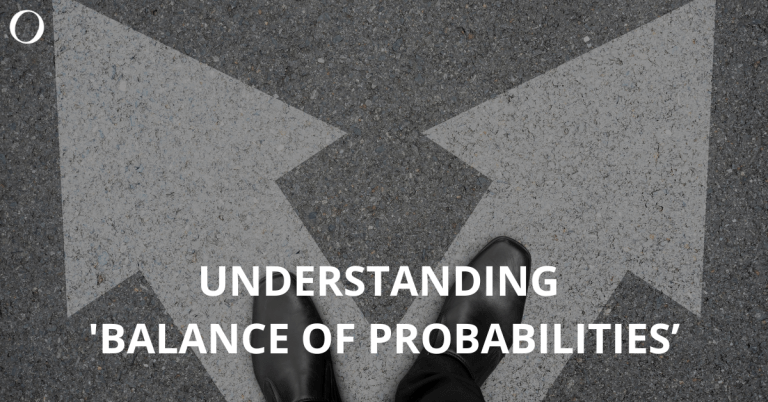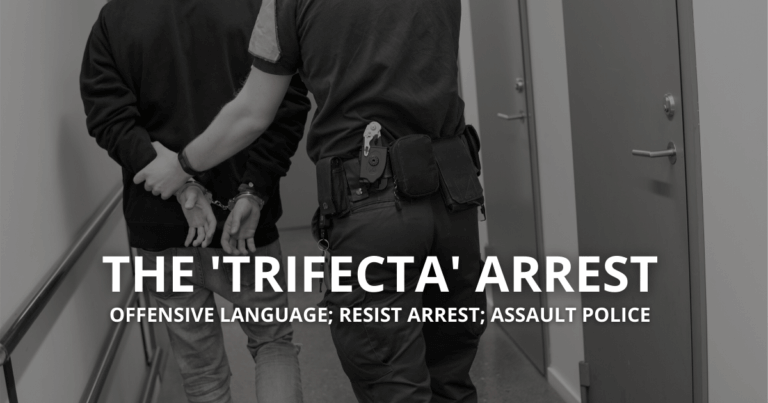Bail Applications
Abstract: A discussion on bail in NSW, including the operation of the bail laws and the process of a bail application in the local court, district court and Supreme Court.
Discussion Includes:
• The difference between bail applications in the district court and the Supreme Court
• Materials required for a bail application in the Supreme Court
• When should a bail application be made?
• Practitioners preparing for a bail application
• Show cause test
• Useful resources
• The Unacceptable Risk Test
• Recent amendment to the Bail Act
• The recent case of DPP (NSW) v Hayne [2023] NSWSC 377
Précis Paper
Bail Applications
1. In this edition of BenchTV, Wilson Tighe (solicitor) and Tim Rayner (solicitor) discuss bail in NSW. This includes the application of the Bail Act 2013 (NSW) and the process of a bail application in the local court, the district court and the Supreme Court. You can watch this on BenchTV, where you may need to get a login.
The difference between bail applications in the district court and the Supreme Court
2. District Court tends to see bail applications in instances where a court proceeding which typically commences in the local court moves from the local court into the district court jurisdiction.
3. The district court sees far less bail applications than the local court, which sees the largest number of bail applications.
4. If there is a refusal of bail in the local court, it is quite commonplace for applications to commence in the Supreme Court. The Supreme Court has jurisdiction to hear a further bail application in instances where bail is refused in the local court on an earlier occasion.
Materials required for a bail application in the Supreme Court
5. The material needed for a bail application in the Supreme Court is very different to the material required in the local court and the district court.
6. In a Supreme Court bail application, there will often be more bail conditions proposed to the court, such as a curfew or reporting obligations to the nearest police station.
7. The Supreme Court registry has a proforma for their Supreme Court bail applications on the Supreme Court website.
8. In NSW, all the relevant material and documentation, has to be filed by close of business each Wednesday. If the material is not filed by then, the bail application will not be listed. If a bail application is filed before the deadline, there will be a call over of that case the following Monday before the Registrar.
9. Once the application is filed, the matter will then be listed for call over. At the call over the registrar will enquire whether all the material is present. They may ask the parties to clarify areas where there is not material present in support of the application. They will then typically fix a timeline for the filing of written submissions.
When should a bail application be made?
10. Make any bail application as soon as possible. When a person is in custody, their liberty is deprived and their confinement occurs in locations such as police stations, youth detention facilities and adult detention facilities.
11. The bringing of an application for bail should be advanced at the earliest possible time.
You should provide that it is realistically able to proceed and you can make submissions that have adequate support by material and evidence.
12. If a bail application runs too early or without proper preparation, there can be limitations in bringing a further application for bail.
In the local court, a person with representation from a practitioner is unable to bring a further bail application if the magistrate refused bail, unless they satisfy certain criteria in section 74 of the Bail Act 2013 (NSW).
Section 74 requires a person to submit that new facts and circumstances exist or that something material has presented itself that did not go before the court on the earlier occasion.
13. If your bail application is refused and you are unable to overcome the section 74 requirements, your only option is to file a bail application in the Supreme Court.
Practitioners preparing for a bail application
14. In order to prepare for a bail application a practitioner must take into consideration the material immediately available to them such as the court attendance notice, the alleged facts and the criminal history.
15. A proper understanding of the type of offence, the maximum penalties that relate to the offences and the scope for penalties is critical to informing how particular arguments are to develop and advance, particularly in relation to bail
16. Further preparation is to ascertain what other evidence can be attained to support a bail plan or conditions of bail. The single most important condition of bail that the court needs to understand is where that person is going to reside. Other conditions under consideration are those that go to reducing risks.
Show cause test
17. Section 16B of the Bail Act 2013 (NSW) contains an extensive list of offences for which show cause is typically enlivened.
18. Show cause is the consideration of reasons for why bail should be granted.
19. Whilst legislation and case law do not specifically define what show cause is, over time there have been factors which are typically advanced and accepted by the courts to demonstrate or overcome the show cause obstacle.
20. In practice, offences which would see a show cause threshold enlivened are ones whereby a person may be subject to bail for an offence and is charged with a further or separate offence whilst on bail and the further or the newer offence that they face is an offence carrying a term of imprisonment of 5 years or more.
21. One powerful factor, such as the amount of time the applicant will spend in custody before their matter gets to hearing, or a combination of factors, such as their health and the likelihood that they will receive a custodial sentence, are the types of considerations which you can put forward as to why a bail application should be successful.
Useful resources
22. In relation to preparation of bail applications and in particular, if there is a show cause requirement in a matter in which a practitioner is appearing in, there are helpful resources on the Public Defender’s website and on the Criminal CPD website.
23. Further, on the legal aid website there is a document called ‘outline of suggested structure of submissions for bail in NSW’. This takes you through the authorities and case law for show cause and the unacceptable risk test. It then also moves into proposed bail conditions that a practitioner can put forward to the court to mitigate any unacceptable risks.
The Unacceptable Risk Test
24. If the show cause test is satisfied, the second test the court looks at is whether there would be an unacceptable risk of a court determining that a person would fall afoul or pose an unacceptable risk if granted bail.
25. Section 17(2) provides that the court, in making a bail decision must address the following bail concerns: a. failure to appear in court
b. if the applicant gains release from custody on bail, will they commit a further offence?
c. will the applicant endanger the safety of any alleged victims within the community?
d. whether the applicant can interfere with any prosecution witnesses
26. During a bail application, the prosecution will make submissions to the court as to what they allege the bail concerns are that apply to the particular person who is the subject of the bail application.
27. The procedure in which a show case will proceed will slightly differ to one where the unacceptable risk test will apply.
28. A Court may only impose a bail condition if it is reasonably sufficient to address a bail concern.
29. However, it is important to note that conditions of bail should not be more onerous than necessary in the circumstances when considering the bail concerns.
Recent Amendment to the Bail Act
30. The most recent amendment to the Bail Act occurred in 2022 and introduced section 22B of the Bail Act. This section covers the limitation regarding bail during the period following conviction and before sentencing for certain offences.
31. During the period following conviction and before sentencing for an offence where a person will be sentenced to imprisonment in the form of full time detention, a court must refuse bail unless it is established that special or exceptional circumstances exist.
Recent case of Jarryd Hayne
In conclusion, let’s examine the matter of former NRL player Jarryd Hayne who faced allegations of sexual assault offences.
32. In this recent case, DPP (NSW) v Hayne [2023] NSWSC 377, former NRL player Jarryd Hayne was convicted of certain offences and found guilty by a jury. His matter then went to a sentence hearing.
33. A detention application was then brought that bail should be granted as special or exceptional circumstances existed that warranted a grant of bail prior to his sentence hearing.
34. That application proceeded before the District Court judge that heard the trial. Mr Hayne was successful in that application. However, the prosecution then brought a detention application to the Supreme Court challenging the decision of the District Court judge.
35. Ultimately, that bail hearing proceeded before Justice Button who determined that in the circumstances, he could not satisfy himself that special or exceptional circumstances existed in Mr Hayne’s case. He revoked bail.
LAWYER BIOGRAPHY
Wilson Tighe
Solicitor, O’Brien Solicitors, Sydney
Wilson completed a Bachelor of Laws/Arts (History) at Charles Darwin University in 2013. Prior to completing his studies, Wilson accrued an eclectic mix of criminal and commercial legal experience. This included volunteering for the Northern Australia Aboriginal Justice Agency (NAAJA)’s Criminal Practice area and working in Victoria as a personal injury /worker’s compensation paralegal.
Wilson completed his ‘articles’ training within a criminal law firm and got admission as a solicitor in Victoria in February 2015. Wilson commenced as a Criminal Solicitor at O’Brien’s Criminal and Civil Solicitors in 2019.
Tim Rayner
Solicitor, O’Brien Solicitors, Sydney
Tim has worked in the criminal practice at O’Brien Criminal and Civil Solicitors for the past five years. He gained admission to practice in August 2022. He holds a Diploma in Law, Bachelor of Arts and Master of International Law and Security.
As a practitioner he has appeared before the:
- Children’s,
- Coroner’s,
- Local,
- District
- and Supreme Courts of NSW
as well as the NSW Civil and Administrative Tribunal. He also appeared before the NSW Crime Commission and the Royal Commission into Defence and Veteran Suicide.
BIBLIOGRAPHY
Cases
DPP (NSW) v Hayne [2023] NSWSC 377
Legislation
Bail Act 2013 (NSW)
Webpages
https://www.publicdefenders.nsw.gov.au/
https://www.legalaid.nsw.gov.au/
PDF version of this precis paper.
Bail Applications Quiz
1. Which Court in NSW sees the most bail applications?
a. The Supreme Court
b. The District Court
c. The Local Court
d. Each of the above courts would see approximately equal amounts of bail applications each year.
2. Which court has jurisdiction to hear bail applications that have been refused in the local court?
a. District Court
b. Supreme Court
c. The High Court
d. Both a. and b.
3. What does section 16B of the Bail Act 2013 (NSW) prescribe?
a. Certain criteria that a person must meet in order to bring a further bail application once they have been refused bail
b. An extensive list of offences for which show cause is typically enlivened
c. An outline of a suggested structure of submissions for bail
d. Requirements for the application of the unacceptable risk test.
4. Which of the following is NOT a bail concern to be addressed by a court address in making a bail decision under section 17(2) of the Bail Act?
a. Failure to appear in court
b. Whether the applicant will commit a further offence
c. Whether the applicant will interfere with any prosecution witnesses
d. Whether the applicant will have a stable residence whilst on bail.
5. What was the decision of the court in DPP (NSW) v Hayne [2023] NSWSC 377?
a. Mr Hayne had special and exceptional circumstances that warranted a grant of bail prior to his sentence hearing
b. Mr Hayne’s offences were such that special and exceptional circumstances were not required for a grant of bail prior to his sentence hearing
c. Special and exceptional circumstances did not exist in Mr Hayne’s case and his bail was revoked
d. Whilst special and exceptional circumstances did not exist in Mr Hayne’s case, as he was already on bail, he could remain on bail until his sentencing hearing provided he presented himself to a police station daily.
Bail Quiz Answers:
1. C
2. B
3. B
4. D
5. C





